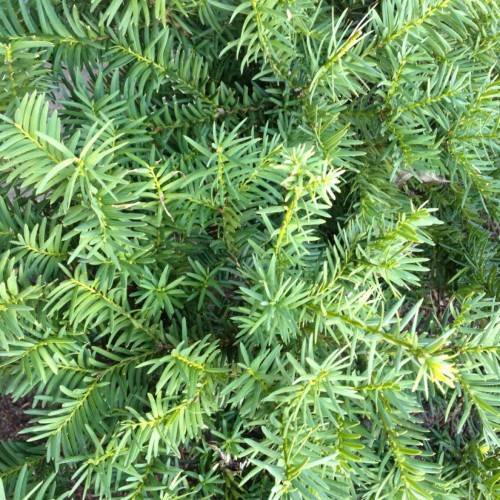
yew
Taxus media 'Hatfieldii'
Cycle:
Perennial
Watering:
Average
Hardiness Zone:
4 - 7
Flowers:
Flowers
Sun:
Full sun,part shade
Cones:
Yes
Leaf:
Yes
Growth Rate:
Low
Maintenance:
Low
Poisonous To Humans:
Yes
Poisonous To Pets:
Yes
Drought Tolerant:
Yes
Salt Tolerant:
Yes
Thorny:
Yes
Care Level:
Medium
watering
The yew should be watered approximately every 5 to 7 days, although this can change depending on the season. During the spring, summer, and fall months, it should be watered whenever the soil feels dry to the touch 1 inch below the surface. During the winter months, reduce the watering frequency and only water the yew as needed. Yews prefer moist, well-drained soil and do not respond well when allowed to become completely dry. Too much water can be just as detrimental as too little. Aim to keep the soil slightly moist but not soggy.
sunlight
Yew (Taxus media 'Hatfieldii') is an evergreen shrub that prefers partial to full sun, depending on your climate. In cooler climates, the plant will benefit from more sunlight, while in hotter climates it should receive some protection from the sun during the hottest part of the day. In terms of the amount of sunlight the plant should receive, it needs at least 6 hours of sunlight each day to thrive. Ideally, it should receive 8 to 10 hours of direct sunlight every day, along with some shade during the day, particularly during the afternoon.
pruning
Yew (Taxus media 'Hatfieldii') plants should be pruned regularly, usually once or twice a year. Late winter to early spring is the ideal time to prune this species of yew. During pruning, the primary goal should be to reduce the size of the plant, while maintaining its natural shape. Dead, diseased, and damaged branches should be removed first. This will help promote air circulation and sunlight penetration. Care should be taken to thin out any dense, overcrowded branches. This will help reduce the number of overcrowded branches; allowing light and air to reach the interior of the plant. Pruning branches too much at 1 time can damage the plant, so just take off a few branches at a time. It is also important to remember that yews do not tolerate heavy pruning well, so be careful not to over-prune and take off too many branches at once.
